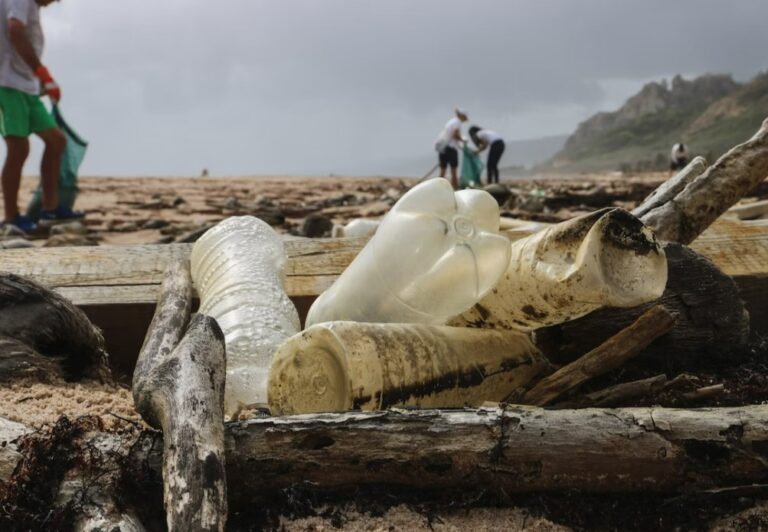The beach clean-up movement has emerged as a powerful force in recent years, addressing the growing concern about coastal pollution and its detrimental effects on our environment. This global movement has gained traction with passionate individuals and organizations working tirelessly to restore the pristine beauty of our beaches while safeguarding marine ecosystems.
In this article, we will explore the significance of the beach clean-up movement and the myriad benefits it brings to both the environment and society.
Table of Contents
What are beach clean-ups
Beaches, with their alluring charm and breathtaking views, have always been a favorite destination for people around the world. However, the unchecked growth of human activities, such as improper waste disposal and industrial runoffs, has led to an alarming increase in beach pollution.
Beach clean-ups are community-driven initiatives aimed at removing litter and debris from beaches and coastal areas. They are organized by local organizations, environmental groups, government agencies, or concerned citizens who want to protect the marine ecosystem and preserve the beauty of the coastline.
During beach clean-ups, volunteers gather together to collect various types of waste, such as plastic bottles, wrappers, cigarette butts, fishing gear, and other discarded items. The collected trash is then properly disposed of or recycled to prevent further pollution and harm to marine life.
Why is beach clean-up so important?
Beach clean-up is essential for several reasons:
1. It protects marine life/ecosystem
Marine creatures often mistake plastic debris for food, leading to ingestion and fatal consequences. By removing harmful pollutants from the shoreline, we reduce the risks to marine life, safeguarding their habitats and biodiversity.
All of us have seen images and movies of marine animals with plastic wrapped around their necks, feet, beaks, wings, flippers, etc. It’s awful and devastating. The good news is that it is avoidable. By removing the garbage that threatens aquatic life and plant life, beach clean-ups assist in protecting the marine ecology.
2. It mitigates ocean pollution
Plastic pollution is one of the gravest challenges facing our oceans. When left unattended, plastic waste disintegrates into microplastics, entering the marine food chain and threatening the entire ecosystem. Beach clean-ups prevent these pollutants from reaching the ocean and reduce the overall burden on marine environments.
3. Establish a secure beach environment
In addition to being unsightly, trash may endanger beachgoers. Public hazards include sharp-edged metal, glass, and plastic. When beachgoers step on these objects that are buried in the sand, they might suffer severe injuries. By removing these risks, beach cleanup makes the area safer and more enjoyable for everyone who visits and uses the beach.
4. Preserving ecosystem balance
Coastal ecosystems, including mangroves, dunes, and wetlands, play a vital role in maintaining environmental equilibrium. Regular beach clean-ups help preserve these ecosystems by preventing pollution-related disruptions and protecting the numerous species that call these areas home.
5. It promotes the local economy
Polluting our beaches comes with a financial price. Local people rely on beach tourism and the availability of coastal flora and fauna for nourishment and tourism (like scuba diving). Tourism, beach activities, and fishing are all impacted by the pollution of the neighboring ocean and beach.
Beach clean-ups help maintain the beauty and cleanliness of our beaches in light of this. A spotless beach will do much to draw visitors to the area and maintain the health of the marine ecosystem, thereby promoting both fishing and tourism.
Read also: Sustainable tourism or ecotourism? They are not the same thing: here is the difference
6. It creates awareness
In addition to the obvious advantages already described, raising awareness of beach pollution is also advantageous.
Organizing beach clean-ups raises awareness about the issue of marine pollution, encouraging people to adopt more sustainable practices and reduce their plastic waste.
How to participate in the beach clean-up
To participate in a beach clean-up, follow these steps:
- Look for local organizations or groups that organize beach clean-up events. You can search online or check community bulletin boards for announcements;
- Register or sign up for the beach clean-up event. Many organizations may have online registration forms or contact information to join;
- On the day of the clean-up, be sure to wear appropriate clothing, such as a hat, sunscreen, and closed-toe shoes. Bring along reusable gloves and a trash bag to collect the litter;
- Listen to the instructions provided by the event organizers and work together with other participants to clean up the designated area;
- Safely dispose of the collected trash in the designated waste disposal bins or containers;
- If you have any questions or concerns during the clean-up, don’t hesitate to ask the organizers or fellow volunteers for guidance.
The beach clean-up movement represents a collective effort
The beach clean-up movement represents a collective effort to restore the beauty of our beaches and protect marine ecosystems from the ravages of pollution. Through the tireless work of volunteers and organizations, we can witness a positive impact on the environment and enjoy numerous social and economic benefits.
As we move forward, it is crucial to continue supporting and participating in beach clean-ups, for only through our combined determination can we ensure cleaner and healthier coastal environments for generations to come. Let us embrace the beach clean-up movement and take responsibility for the conservation of our precious marine treasures.
Read also: Blue Economy: what is it and what are its main components and principles












